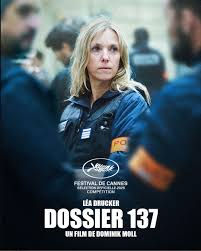Wild at Heart
- Nicolò Roncone
- 22 mag
- Tempo di lettura: 2 min
Aggiornamento: 24 mag
“If you are truly wild at heart, you’ll fight for your dreams”

On May 19, 1990, riding the wave of Twin Peaks' acclaim from both the public and critics, after tumultuous production struggles, Cannes awarded David Lynch's Wild at Heart the Palme d'Or. It might seem simple to describe it as the Wizard of Oz of the '90s; grotesque, disorienting, and illogical (as revealed in Lynch’s interview with Time Out in those years), yet in many ways, the film takes on an even more unique and anticipatory character for the “incorrect” road movie genre filled with sex, drugs, and rock n’ roll, which we would later come to know (just to name a few: Ridley Scott's Thelma & Louise and Terry Gilliam's Fear and Loathing in Las Vegas). Lynch’s grotesque modern fairytale presents the romantic escape of Sailor (Nicolas Cage), a kind of contemporary outlaw, and Lula (Laura Dern), a 20-year-old beauty who finds in Sailor and their journey the longed-for personal and sexual freedom from her possessive, psychotic mother, Marietta, played by a stellar Diane Ladd.
A surreal journey, without a clear destination, with a distant California that will turn out to be unreachable, strange encounters along the way constantly derail the two protagonists, who are pursued by bored, ruthless assassins like Marcellus Santos (J.E. Freeman) and perverted criminals like Bobby Peru (Willem Dafoe), accompanied by seductive criminal muses such as the Durango sisters (played by Isabella Rossellini and Grace Zabriskie). The film presents the style that we now, of course, define as Lynchian, synonymous with surreal, illogical, alienating, and even humorous narration (such as the episode with the hand after the shootout), but enriched by a series of mystical and magical elements, like the representation of evil through Marietta’s witchcraft and the final sense of morality and responsibility towards the future from the Good Witch, who appears to Sailor, now motivated to reunite with Lula and the fruit of their love.
Wild at Heart is, therefore, a work with a multitude of stylistic elements, and various anticipations typical of the '90s, from the road movie and musical to romance, thriller, and the drama lived by the characters, especially Lula, with the constant ability to confuse and deceive the viewer with the apparent simplicity of an escape, the characters, and their motivations, similar to a form of vengeful and possessive infantilism. Elvis Presley’s Love Me Tender thus becomes the soundtrack for the fugitive spirit and the love between Sailor and Lula, unrestrained, complementary, and disorderly, probably destined to fail in the sense of adventure but ultimately finding a solid point. This synthesis can give our protagonists responsibility. Wild at Heart is not just something unique in the filmography of David Lynch's genius; its stylistic importance represents something singular, a blend of genres accompanied by Angelo Badalamenti’s music and the iconic nature of its characters, carried towards freedom by their wild love.
by Nicolò Roncone




Commenti